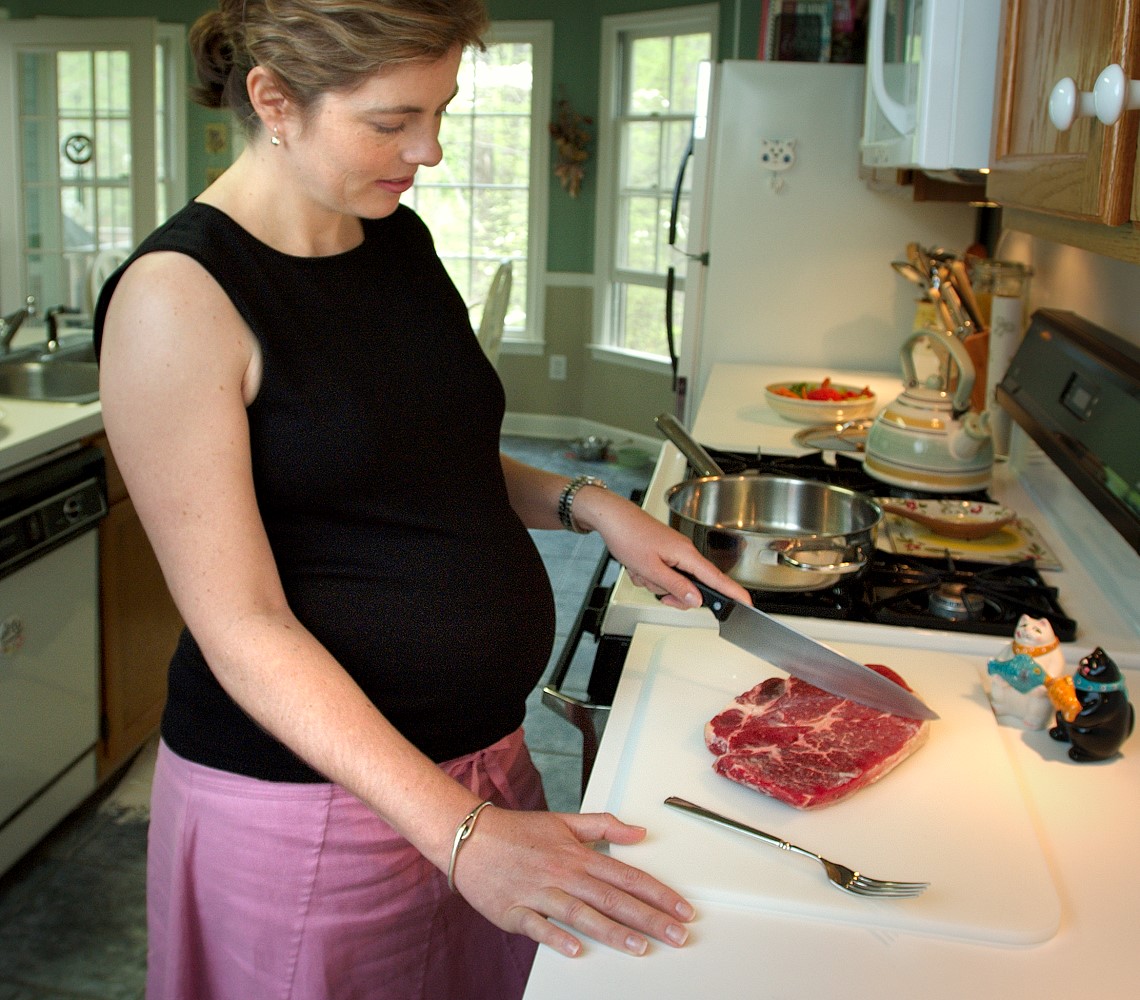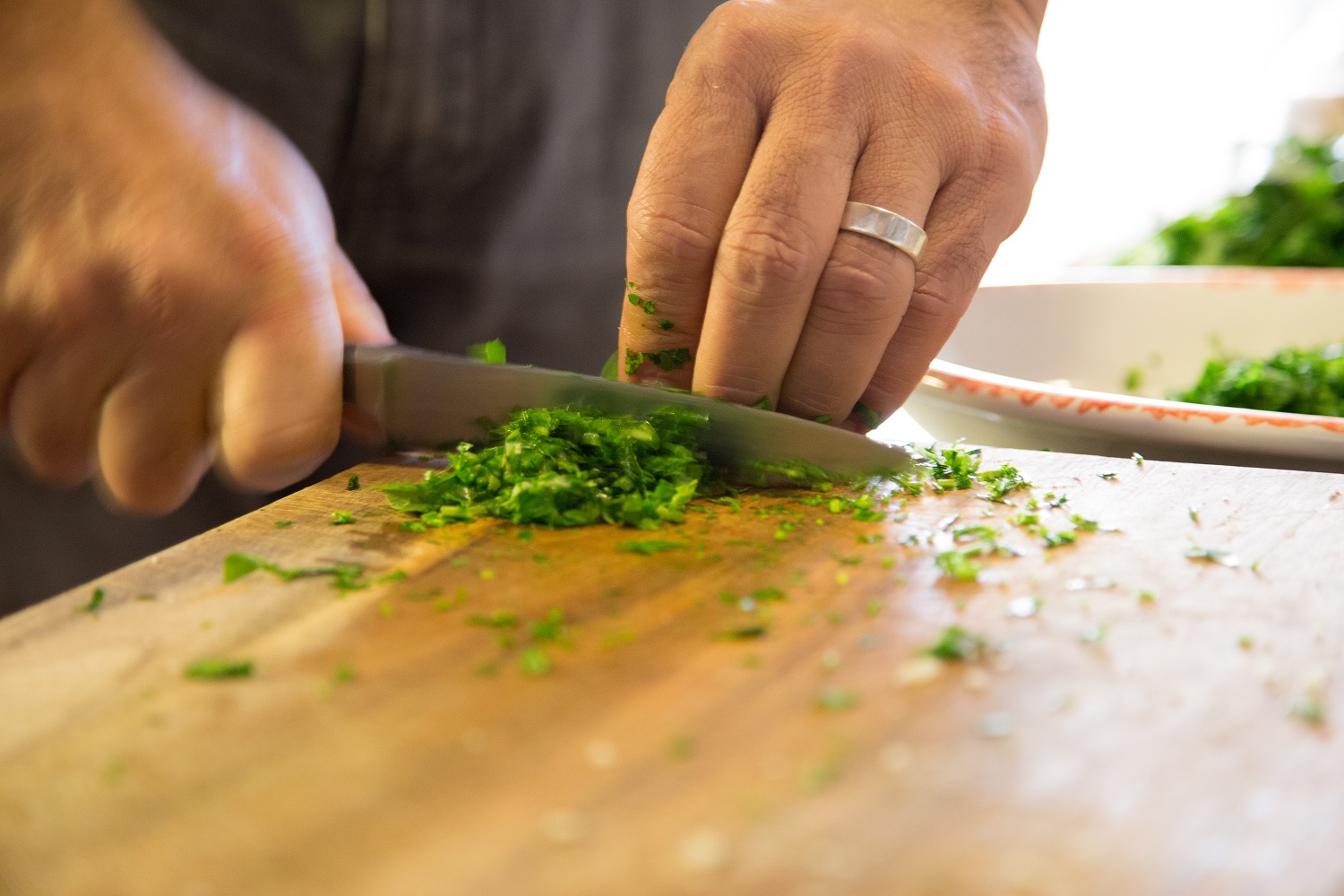Kitchen Knives
 A rule of thumb in safe food preparation is to be sure you don’t cut raw meat, poultry or fish on the same surface without thoroughly cleaning it between uses. The same is true for your knife. Wash your knife with dish soap and hot water after each use. Rinse with clear water. Air-dry or pat dry with clean paper towels.
A rule of thumb in safe food preparation is to be sure you don’t cut raw meat, poultry or fish on the same surface without thoroughly cleaning it between uses. The same is true for your knife. Wash your knife with dish soap and hot water after each use. Rinse with clear water. Air-dry or pat dry with clean paper towels.
- Typically you should wash hollow-handled knives by hand
- Handle kitchen knives carefully by their handles; don’t pile them into the sink or dishpan, but wash them one by one and rack them with handles up.
- To prevent pitting of your silver knives, make sure to limit contact between silver and stainless steel in the dishwasher. Place silverware and stainless steel flatware in silverware basket so they do not touch. Most silver knives have stainless steel blades; make sure knives are all placed with blades in the same direction.
Cutting Boards
 A rule of thumb in safe food preparation is to be sure you don’t cut raw meat, poultry or fish on the same surface without thoroughly cleaning it between uses. An even better idea is to have two cutting boards – one reserved for meat, poultry and fish, the other reserved for fruits, vegetables, etc.
A rule of thumb in safe food preparation is to be sure you don’t cut raw meat, poultry or fish on the same surface without thoroughly cleaning it between uses. An even better idea is to have two cutting boards – one reserved for meat, poultry and fish, the other reserved for fruits, vegetables, etc.
Selecting a Cutting Board
The cutting-board surface is a matter of personal preference. Plastic boards are lighter in weight, but wood boards are kinder to your knives. Some people mistakenly believe that plastic boards are less likely to harbor bacteria than wood ones, but microbiologists at the University of Wisconsin’s Food Research Institute discovered that this isn’t true. In fact, wood seems to have some as-yet unidentified agent that is inhospitable to bacteria. Good cleaning practices are essential for safe food preparation.
Cleaning Cutting Boards
No matter which surface you choose, it’s essential to keep all cutting boards clean. Wash with hot, soapy water after each use. Rinse with clear water and air or pat-dry with clean paper towels. Note that some nonporous cutting boards, including acrylic, plastic or glass, can also be washed in the dishwasher.
If the cutting board was used for uncooked meat, fish or poultry, sanitize it after cleaning with a solution of one tablespoon of liquid chlorine bleach per gallon of water. Flood the surface with the bleach solution and allow it to stand for several minutes. Rinse with clear water and air- or pat-dry with clean paper towels.